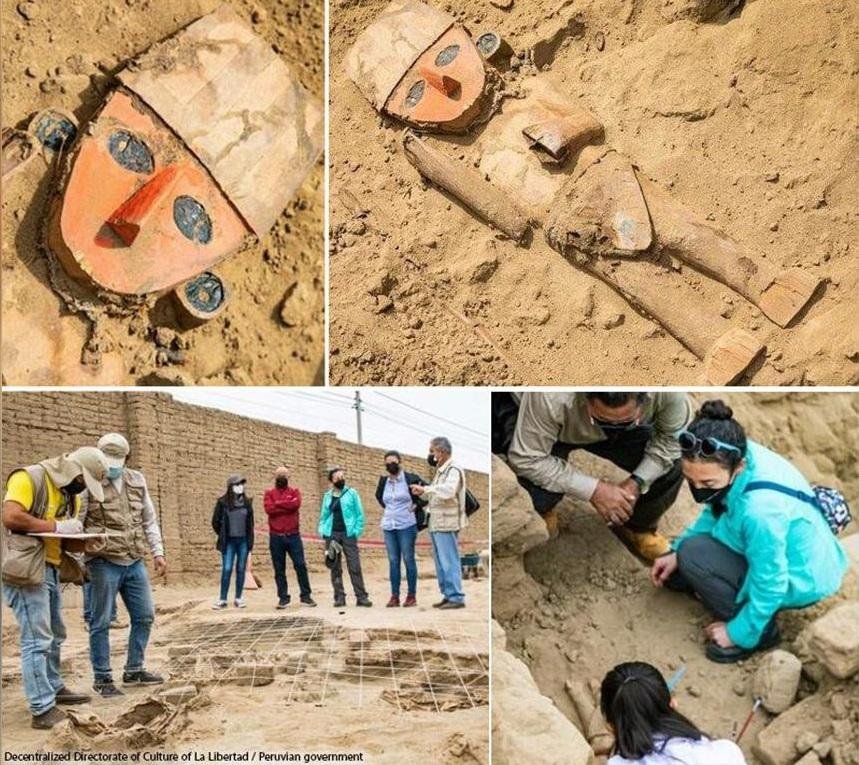At a ceremonial center located close to Chan Chan, Trujillo in the northern part of Peru, an exquisitely well-preserved piece of Peruvian Chimu culture sculpture in the form of an unusual wooden figure has been discovered.
 Credit: Decentralized Directorate of Culture of La Libertad / Peruvian government .
Credit: Decentralized Directorate of Culture of La Libertad / Peruvian government .
The well-preserved wooden sculpture has a form and art style that are characteristic of the early Chimu culture period. This was a prosperous pre-Hispanic civilization that had a capital city named Chan Chan. The sculpture’s age has been estimated to be between 850 and 1500 years old.
Chan Chan got its name from the Quingnam word Jiang or Chang, which means “sun.” Before it was conquered and incorporated into the Inca Empire in 1470 CE, Chan Chan was the largest mud-brick city in the pre-Hispanic Americas.
Peru’s Ministry of Culture reported the find last Tuesday, as part of excavation work in the third stage of the “Recovery of the Huaca Takaynamo of the Chan Chan Archaeological Complex” project.
Huacas are natural artifacts or monuments, such as large rocks or even hills, that have been given significance and reverence by Peruvian peoples and may be found all over the country.
The recently unearthed Chimu sculpture was 46 x 16 centimeters in size (18 x 6.2 inches). It is a human figure wearing a trapezoid-shaped headdress, most likely a ruler’s ceremonial bearer of ritual artifacts. According to reports, the statue is “ornate,” which seems a bit of a stretch. But all of this is relative to time and place.
César Gálvez Mora, director of the Chan Chan Archaeological Complex Special Project, said, “The find adds to substantial evidence confirming the ceremonial function of Chan Chan’s peripheral.”





